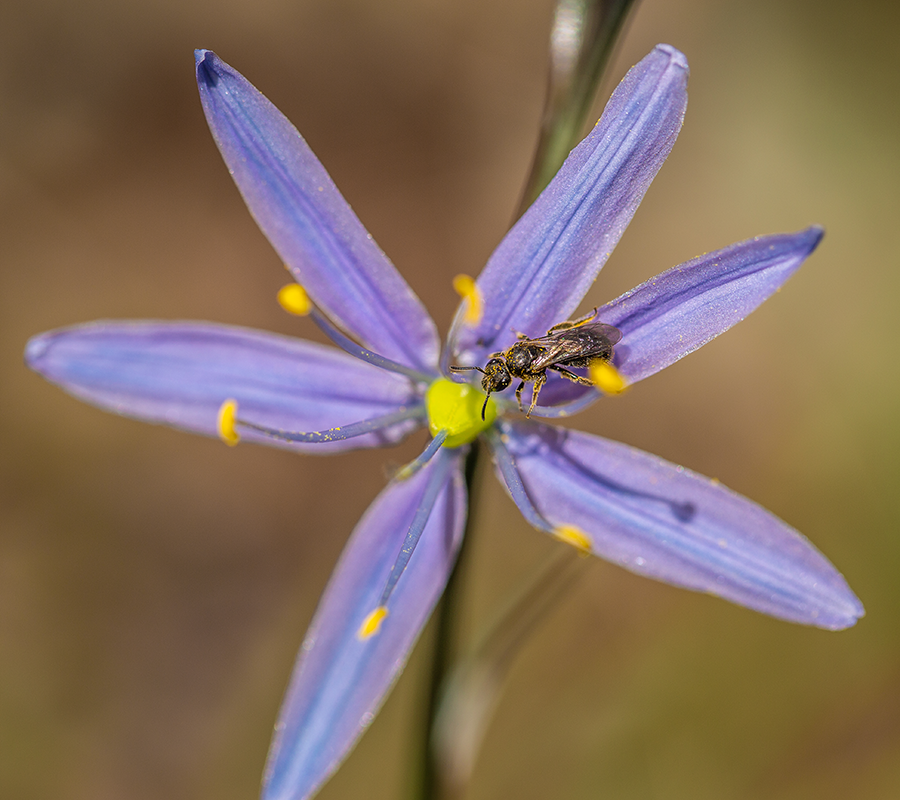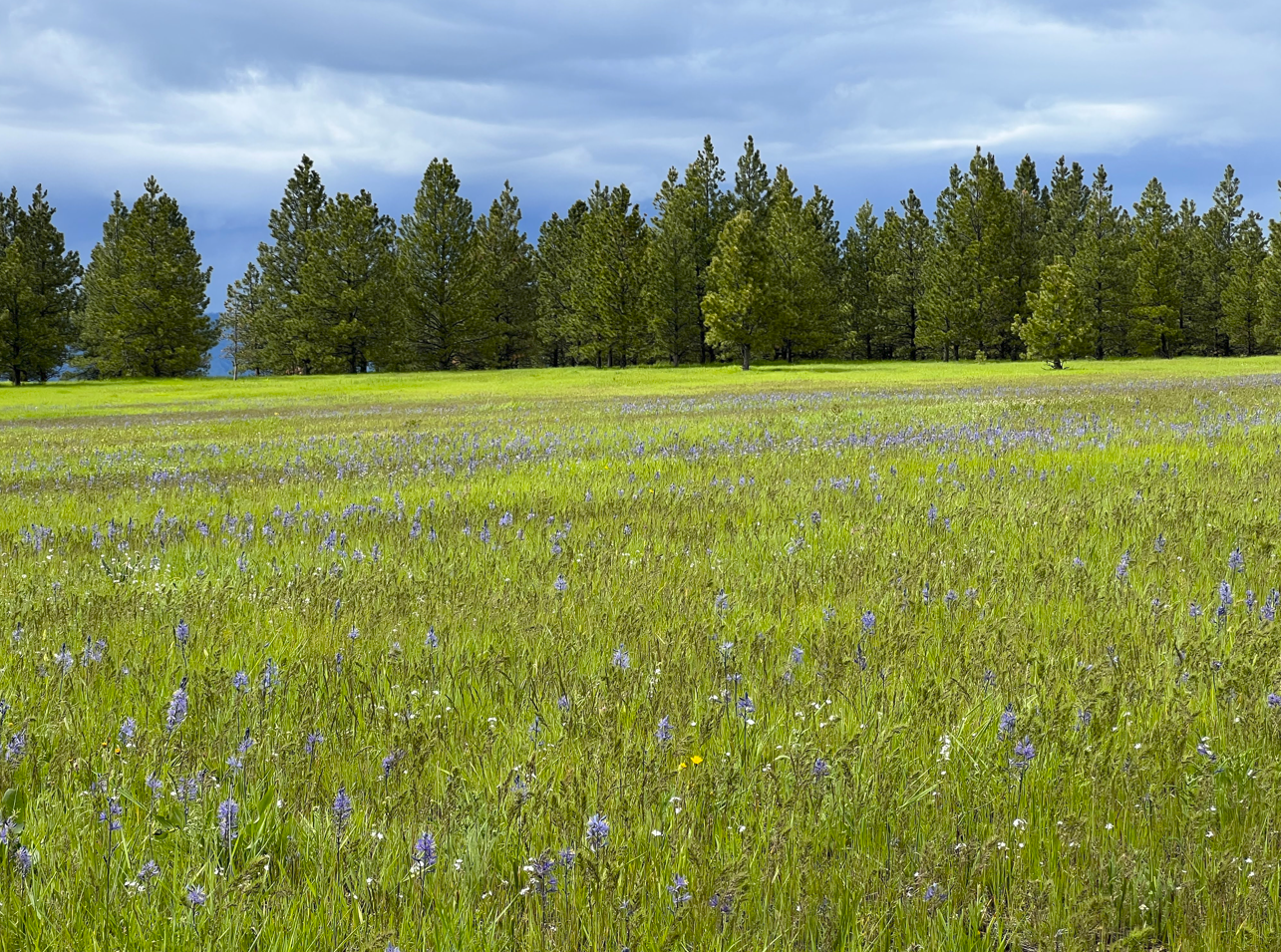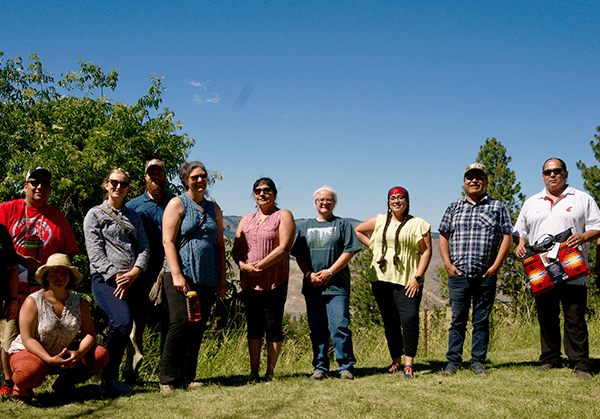Your support strengthens the link between land and well-being
When Pelah Hoyt, Y2Y’s director of landscape connectivity, thinks about her connection to nature, two people come to mind: her grandmother and mother.
Her grandmother was an artist, creating paintings inspired by the natural world. Pelah’s mother was a public radio reporter.
In the 1990s, her mother went to the Nez Perce Tribe’s reservation in Idaho to cover stories about their salmon recovery and wolf reintroduction efforts.
More recently, Pelah returned to the region alongside Y2Y staff and our board of directors as part of our spring board meeting and project field trip.
“I can remember when I first learned about the Nez Perce Tribe’s approach to conservation. I was in awe of their vision and dedication to bring back all the animals that were once here,” recounts Pelah. “Today, they continue their work to heal the relationship between people and the land.”
As part of the field trip, the Y2Y team learned about tribally-led climate resilience initiatives, including a data collection program led by Nez Perce gatherers, analyzing climate change impacts to traditional wild foods.

Camas to Condors climate resilience initiative
Since 2018, Y2Y and partners have been working with the Nez Perce Tribe on their Indigenous-led Camas to Condors (C2C) initiative.
The goal is to create landscape-scale climate solutions to support connectivity for wildlife, restore habitats with traditionally harvested plants, and nurture traditional lifeways.
This initiative recognizes that people whose cultures emerged from deep intimacy with their homelands are well positioned to be its most responsive advocates and stewards.
“We know how to do this work and lead this work. We’re healing as a people. It’s a whole system restoration,” says one gatherer from the Tribe.
“We know how to do this work and lead this work. We’re healing as a people. It’s a whole system restoration.”
Nez Perce Tribe traditional gatherer
Y2Y is proud to fund this program, and support collaborative planning efforts to bring the project’s vision to life.
Its namesake, the camas plant, is a deep-purple flower found in wetlands, while the critically endangered California condor is the largest North American land bird. Together, they represent the resilience of ecosystems the Nimíipuu — the Nez Perce people — have stewarded since time immemorial.
Extending from the mouth of the Columbia River to West Yellowstone, the Nez Perce Tribe’s traditional territory and usual and accustomed areas are home to some of the largest undeveloped tracts of public and protected land in the U.S.
Restoring the landscape here supports Y2Y’s mission of connecting and protecting habitat so people and nature can thrive.

Advancing Indigenous-led climate action
Climate change is disrupting the balance that sustains biodiversity in this region. Drought, heat waves, fires, and erosion are killing fish and spreading diseases in wild game. These extreme shifts also impact the availability and quality of wild gathered foods and medicines.
These changes are not mere inconveniences to the Nimíipuu — they represent an existential threat to their way of life.
“Traditional gatherers in the Nez Perce Tribe have sounded the alarm about climate impacts on cultural plants for years,” says Pelah. “Following the leadership of the Nimíipuu will heal these landscapes for plants, wildlife, and people for generations to come.”
“Following the leadership of the Nimíipuu (Nez Perce) will heal these landscapes for plants, wildlife, and people for generations to come.”
Pelah Hoyt, director of landscape connectivity, Yellowstone to Yukon Conservation Initiative
Central to this work is the connection between nature thriving and people’s healing. Nimíipuu Behavioral Health and the Wellbriety Program are part of the initiative, welcoming people in addiction recovery into this work to restore connection with the land, their culture, and their well-being.
“By knowing our cultural ways and having a relationship with the land, that’s how we’re going to be ok,” says another gatherer from the Tribe.
You are helping projects like Camas to Condors come to life and advancing Indigenous-led climate action.
Together, we’re supporting climate solutions and landscape connectivity at a scale nature needs.
Thank you for supporting projects that heal people and nature across the Yellowstone to Yukon region.
This project is made possible with funding from: Mosaic, a project of The Tides Center; Wildlife Conservation Society Climate Adaptation Fund, supported by the Doris Duke Charitable Foundation



